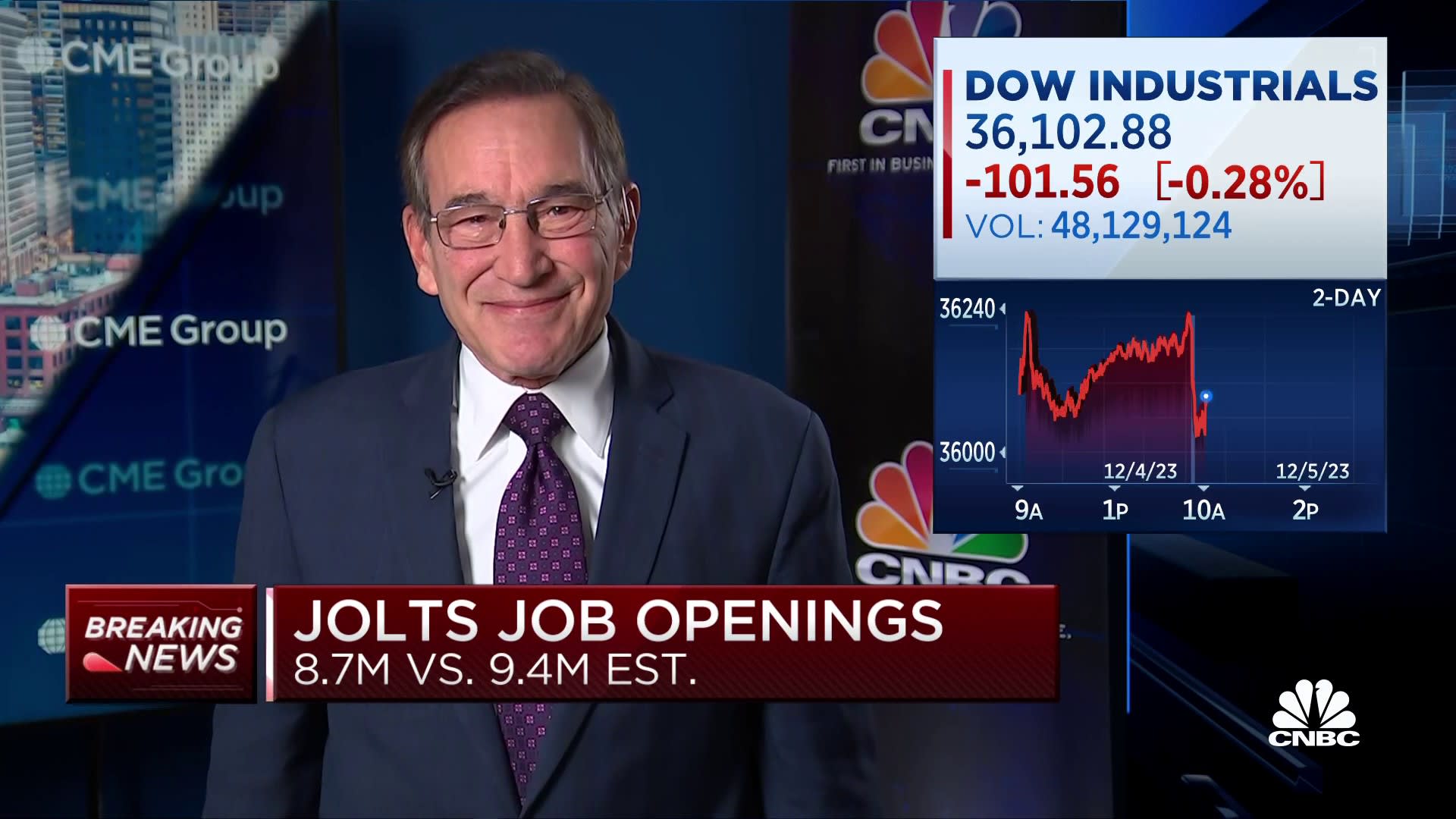
Job openings tumbled in October to their lowest in 2½ years, a sign that the historically tight labor market could be loosening.
Employment openings totaled a seasonally adjusted 8.73 million for the month, a decline of 617,000, or 6.6%, the Labor Department reported Tuesday. The number was well below the 9.4 million estimate from Dow Jones and the lowest since March 2021.
The decline in vacancies brought the ratio of openings to available workers down to 1.3 to 1, a level that only a few months ago was around 2 to 1 and is nearly inline with the pre-pandemic level of 1.2 to 1.
Federal Reserve policymakers watch the report, known as the Job Openings and Labor Turnover Survey, closely for signs of labor slack. The Fed has boosted interest rates dramatically since March 2022 in an effort to slow the labor market and cool inflation, and is contemplating its next policy move.
While job openings fell dramatically, total hires only nudged lower while layoffs and separations were modestly higher.
Quits, which are seen as a measure of worker confidence in the ability to change jobs and find another one easily, also were little changed. The quits rate had peaked around 3% of total employment in late 2021 into early 2022, during what briefly was known as the Great Resignation as workers left their old jobs in search of positions that paid more and offered better working conditions; it since has declined to 2.3%.
“This data certainly solidifies the Fed’s decision to keep rates unchanged while looking for signs of a pivot in the upcoming meeting next week,” said Tuan Nguyen, U.S. economist at RSM. “Besides inflation, job opening data, serving as a proxy for labor demand and wage pressure, has been the Fed’s top priority in recent times.”
Declines in job openings were widespread by industry.
The biggest sector decline was education and health services (-238,000), followed by financial activities (-217,000), leisure and hospitality (-136,000) and retail (-102,000).
The JOLTS report comes just a few days ahead of the Labor Department’s nonfarm payrolls count for November. Economists expect that report to an increase of 190,000, an uptick from October’s 150,000, according to Dow Jones.
Fed officials have been targeting the red-hot jobs market as a specific area of concern in their battle to take inflation down from what had been a four-decade high last year. Seeing a decline in job openings likely will be welcome news to policymakers as it could mean that less labor demand could help bring the jobs market back in line from what had been a huge mismatch with supply.
The Fed holds its two-day policy meeting next week, with markets largely expecting the Federal Open Market Committee to leave interest rates unchanged. Traders in the fed funds futures market are pricing in rate cuts to begin in March on anticipation that inflation data will continue to show progress and as the central bank tries to fend off a potential slowdown or recession ahead.
In other economic news Tuesday, the ISM services index for November registered a reading of 52.7%, representing the share of companies reporting expansion versus contraction. The reading was nearly a full percentage point higher than October and slightly above the Dow Jones forecast for 52.4%.
Gains in the survey came from inventory sentiment, inventories and new export orders. Employment nudged higher to 50.7% while prices edged lower to 58.3%. A reading above 50% represents growth.






